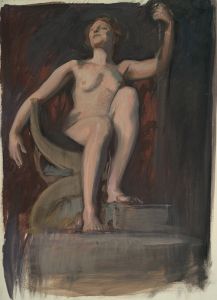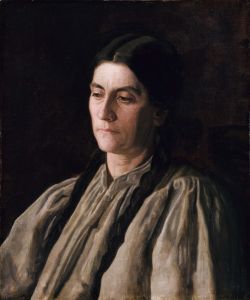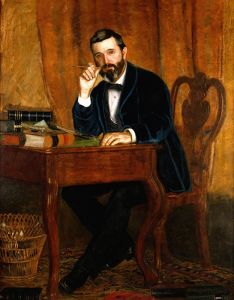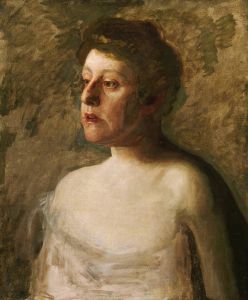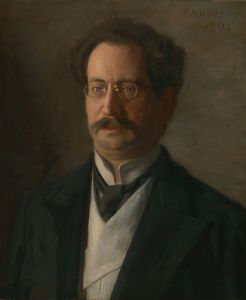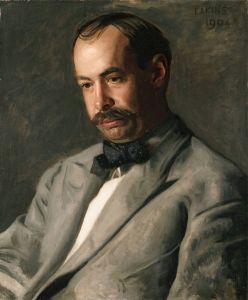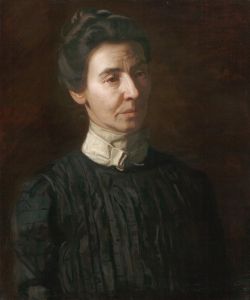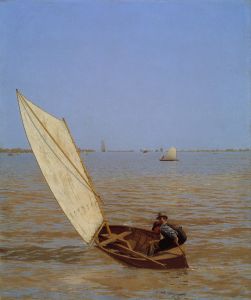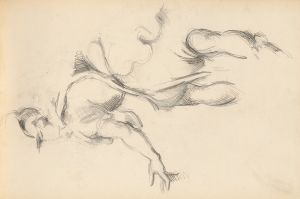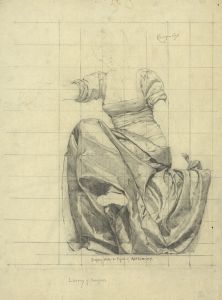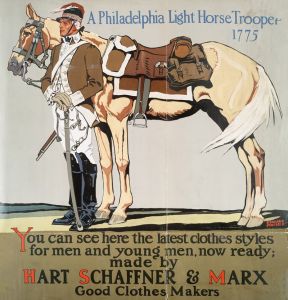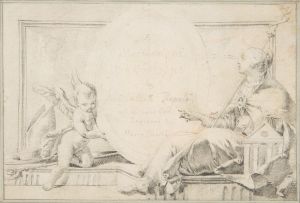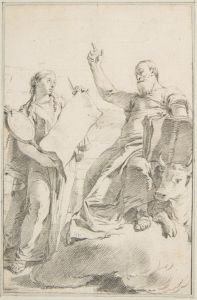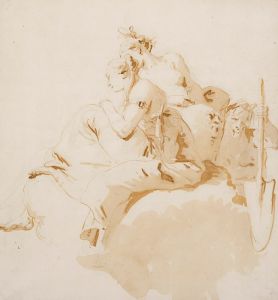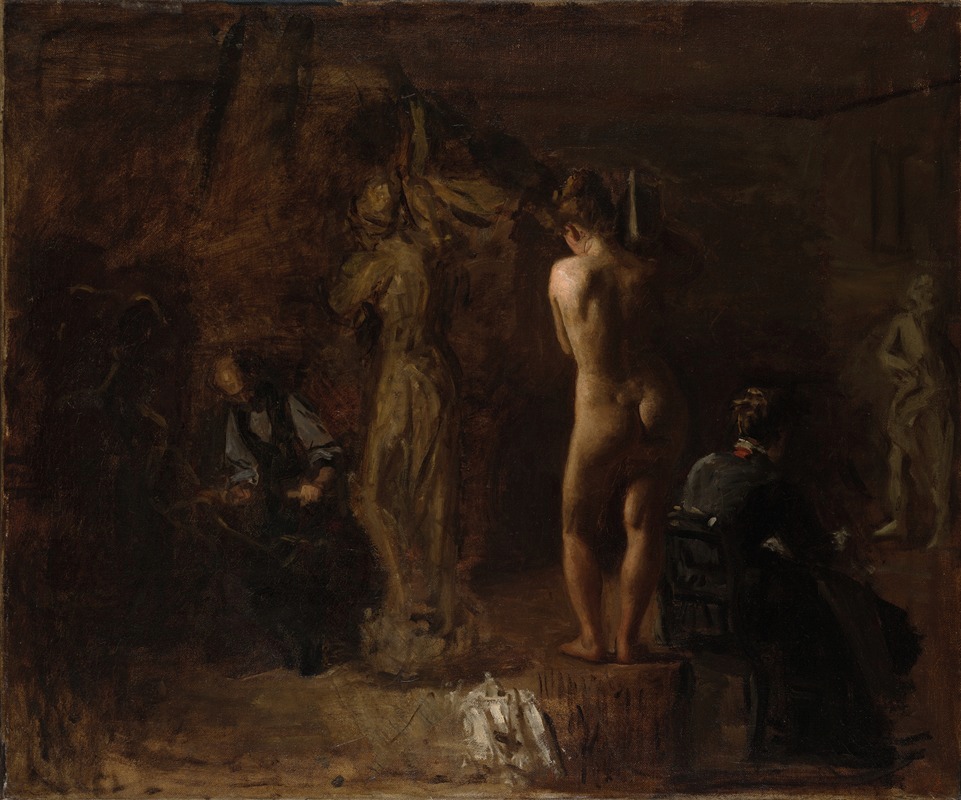
William Rush Carving His Allegorical Figure of the Schuylkill River, Study
A hand-painted replica of Thomas Eakins’s masterpiece William Rush Carving His Allegorical Figure of the Schuylkill River, Study, meticulously crafted by professional artists to capture the true essence of the original. Each piece is created with museum-quality canvas and rare mineral pigments, carefully painted by experienced artists with delicate brushstrokes and rich, layered colors to perfectly recreate the texture of the original artwork. Unlike machine-printed reproductions, this hand-painted version brings the painting to life, infused with the artist’s emotions and skill in every stroke. Whether for personal collection or home decoration, it instantly elevates the artistic atmosphere of any space.
"William Rush Carving His Allegorical Figure of the Schuylkill River, Study" is a painting by the American artist Thomas Eakins, created in 1876–1877. This work is a study for a larger, more finished painting that Eakins completed in 1877, which is known as "William Rush Carving His Allegorical Figure of the Schuylkill River." The study and the final painting are significant examples of Eakins' interest in realism and his dedication to depicting American subjects with historical and cultural relevance.
Thomas Eakins was a prominent figure in American art, known for his realistic portrayals and his focus on the human figure. He was deeply influenced by his academic training and his experiences in Europe, particularly in Paris, where he studied at the École des Beaux-Arts. Eakins' work often reflects his commitment to anatomical accuracy and his interest in the scientific aspects of art.
The subject of the painting, William Rush, was an important American sculptor in the early 19th century, often regarded as one of the first major sculptors in the United States. Rush was known for his wood carvings and public sculptures, many of which were created for the city of Philadelphia. The allegorical figure he is depicted carving in Eakins' painting represents the Schuylkill River, a significant waterway in Pennsylvania that played a crucial role in the development of Philadelphia.
In "William Rush Carving His Allegorical Figure of the Schuylkill River, Study," Eakins captures Rush in the act of sculpting, surrounded by his tools and materials. The setting is Rush's studio, which Eakins portrays with attention to detail, emphasizing the artistic process and the environment in which Rush worked. The study focuses on the interaction between the artist and his creation, highlighting the physicality and skill involved in the act of carving.
Eakins' choice to depict William Rush is indicative of his interest in American themes and his desire to celebrate the nation's cultural heritage. By choosing a subject like Rush, Eakins aligns himself with the American artistic tradition and pays homage to a figure who contributed to the country's artistic identity.
The study is executed with Eakins' characteristic precision and attention to detail. His use of light and shadow, as well as his careful rendering of textures, demonstrates his skill in creating a realistic and immersive scene. Eakins' focus on the human figure is evident in the way he portrays Rush, capturing both the physical likeness and the concentration of the sculptor at work.
"William Rush Carving His Allegorical Figure of the Schuylkill River, Study" is an important work in Eakins' oeuvre, reflecting his dedication to realism and his interest in American history and culture. The painting serves as a testament to Eakins' ability to blend technical skill with a deep appreciation for his subjects, making it a valuable piece in the study of American art history.





